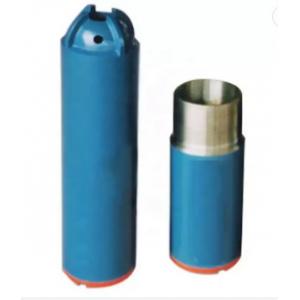Alloy steel Casing Float Shoe Float Collar Cementing Tool 4 1/2" - 20"
Add to Cart
Cementing tool casing float shoe float collar
1.Description:
connecting at the bottom of the tubing string, used to guide the casing string smoothly into the hole, playing a suspended casing, preventing the cement slurry reverse flow and realization of condensation after cementing bump pressure discharge pressure, reducing load, controlling the height of cement plug. Main Features
1) All inner parts are made of easily drillable aluminum alloy.
2) The device can be connected directly to same type casing.
3) Reliable back-pressure leak proof structure, enable grout or slurry flow with less resistance.
4) Valve seat and valve disk can effectively prevent grout from flowing back.
Specification
Float Shoe
A rounded profile float shoe with an integral check valve attached
to the bottom of a casing string prevents reverse flow, or
U-tubing, of cement slurry from the annulus into the casing or flow
of wellbore fluids into the casing string as it is run. The
float shoe also guides the casing toward the center of the hole to
minimize hitting rock ledges or washouts as the casing is run into
the wellbore. By "floating" casing in, hook weight is reduced. With
controlled or partial fill-up as the string is run, the casing
string can be floated into position, precluding the need for the
rig to carry the entire weight of the casing string. The outer
portions of the float shoe are made of steel and generally match
the casing size and threads, although not necessarily the casing
grade. The inside (including the external taper) is usually made of
cement or thermoplastic, since this material must be drilled out if
the well is to be deepened beyond the casing point.
Float Collar
A float collar is installed near the bottom of the casing string.
Cement plugs land on it during the primary cementing operation,
thus retaining inside the casing a small portion of the cement
slurry that may have become contaminated as the top plug scrapes
the inside of the casing. It is similar to a float shoe; often both
are used for redundancy. The internal check valves may be flapper
type or spring-loaded balls.
The check-valve assembly fixed within the float collar prevents
flow back of the cement slurry when pumping is stopped. Without a
float collar or float shoe, the cement slurry placed in the annulus
could U-tube, or reverse flow back into the casing. The greater
density of cement slurries than the displacement mud inside the
casing causes the U-tube effect.



